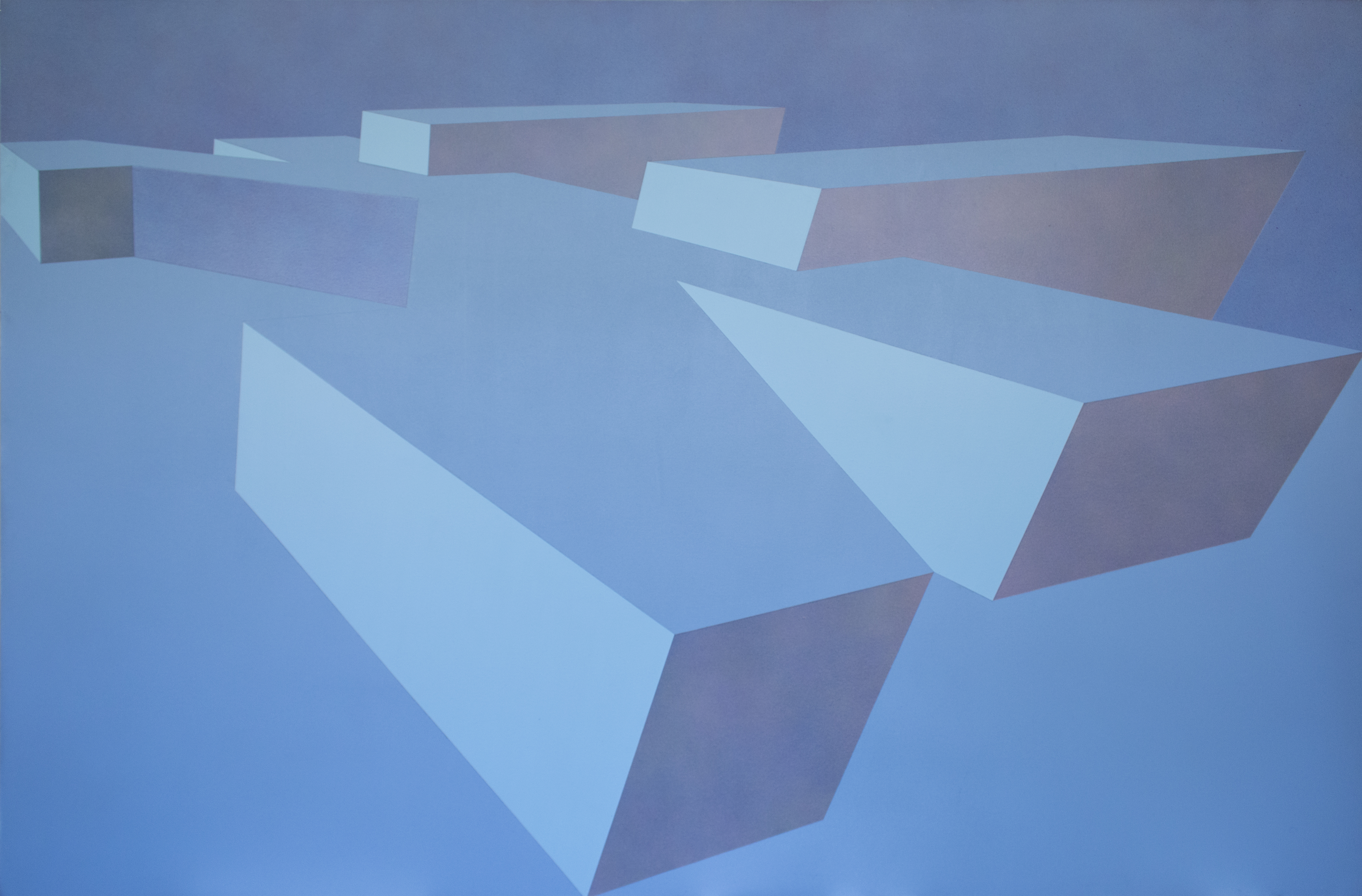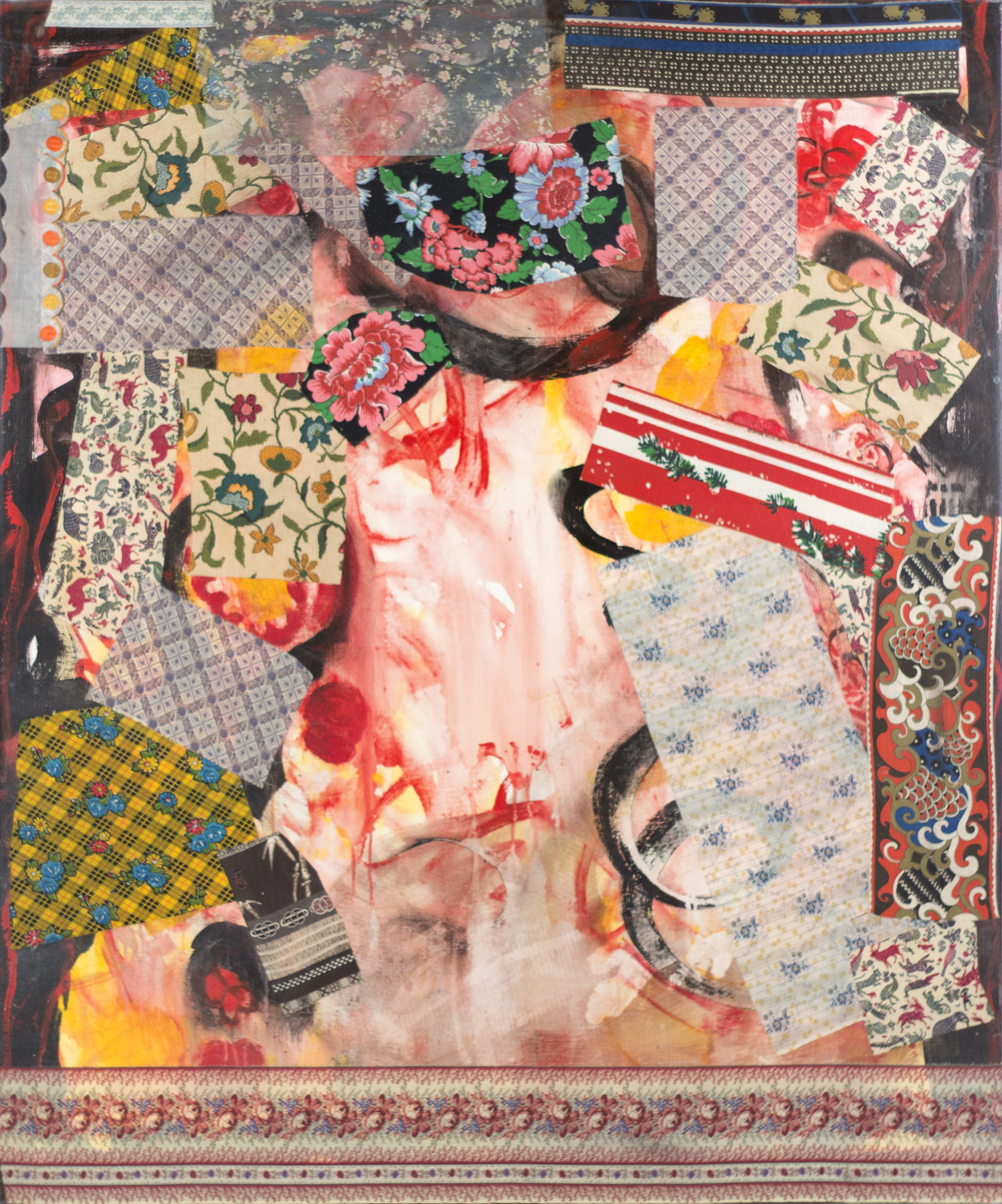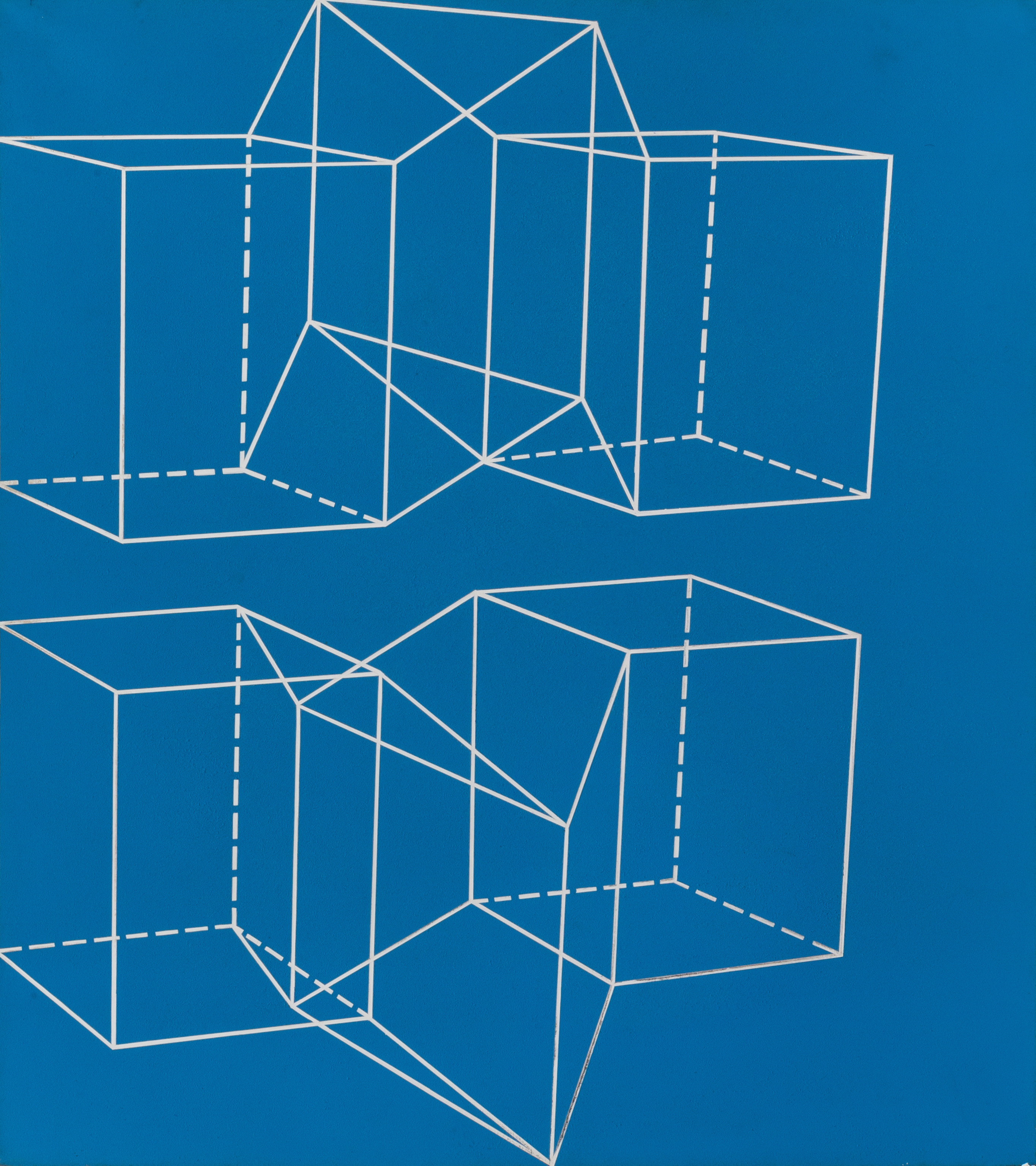With two exhibitions overlapping in Manhattan, the late Miriam Schapiro is having a moment.
At the National Academy Museum, "Miriam Schapiro: A Visionary" presents a survey of her career and begins with the Abstract Expressionist works of the 1950s and goes through the 1990s when her work was more inclined to address politics and identity. But I was more interested in seeing a slice of the more abstract work from her California years (1967-1975) presented in the appealing, if retro, space that Eric Firestone has opened on Great Jones Street in New York City. Focused, welcoming and more than abundant in terms of aesthetic ideas to chew on, "Miriam Schapiro: The California Years, 1967-1975" opens a window on the mind of a significant figure in American art history.
Miriam Schapiro (1923-2015) was born in Toronto in 1923 and studied at the University of Iowa. She is best known as the co-founder, with Judy Chicago, of the Feminist Art Program when both were teaching at the California Institute of the Arts in 1970. By that time, Schapiro had been in California for three years, having left New York (where she was one of Andre Emmerich’s artists along with Helen Frankenthaler, Anthony Caro and Morris Louis) to teach at the University of California at San Diego.
My favorite painting in the show, Byzantium, was made in 1967 when Schapiro first arrived in California. The viewer can feel her vision expand with the change in her surroundings. Bright colors, hard edges and bold geometry convey not just the metropolis, with overlapping planes that offer the appropriately byzantine complexity on an optical level, but the feeling of sunlight and warmth that greeted her there.
The columnar and pyramidal forms of the “buildings” float and turn against a vivid blue sky, with paired complementary colors such as blue and gold, or triads of orange green and blue, that are more absorbing mixed tones than the factory colors of a Rubik’s cube, even if some of that idea of shifting through permutations is present. The work made me think of an urban set design into which the forms fly from the wings.
.
"Byzantium" by Miriam Schapiro, 1967. Acrylic on canvas, 108 x 72 inches. ©The Estate of Miriam Schapiro, Courtesy of Eric Firestone Gallery.
.
In a show that offers a wide range of styles, the other hard-edge paintings have major wall presence, including the soaring, Surrealist Keyhole and the subtle, elegant if understated Horizontal Woman No. 2. The latter is one of the most admirable examples of the way the artist combined hard-edged painting with her spray technique, layering veils of color on the suspended geometry that made Byzantium such gravity-free pleasure.
.
"Keyhole" by Miriam Schapiro, 1971. Acrylic and spray paint on canvas, 71.5 x 106 inches. ©The Estate of Miriam Schapiro, courtesy of Eric Firestone Gallery.
.

"Horizontal Woman No. 2" by Miriam Schapiro, 1971. Pencil, acrylic and spray on canvas, 72 x 108 inches. ©The Estate of Miriam Schapiro, courtesy of Eric Firestone Gallery.
.
When Schapiro increased the scale of her canvases in California for even bolder graphic statements, she created such monumental images as Side Ox (1968) with its cruciform orange bars popping from a radiant silvery surface. A moment with this painting offers a good introduction to the compositional lingo of many Schapiro works. There, at the center, is a hexagonal opening, forming a “core” around which the painting revolves.
.

"Side Ox" by Miriam Schapiro, 1968. 50 x 60 inches. ©The Estate of Miriam Schapiro, courtesy of Eric Firestone Gallery.
.
Take that “core” and apply it to the strikingly different later acrylic and collage paintings of 1972 and 1973, specifically the Arabian Nights fantasy titled Flying Carpet with its Klimt touch of golden fabric. The forms dance around an intimate glimpse of stairs that ascend toward the upper right corner of the work, low risers to some intriguing domestic space.
Shapiro was, in addition to her feminist role, also a pioneer of the Pattern and Decoration movement, an aspect of her studio practice that is evident in these pieces. An even more poetic piece is Eurydice, with its looping black lines of acrylic that spiral down below the collage elements and its firm lower border. Schapiro had a whole archive of these swatches that she pulled from for these “femmages,” many of them still in storage.
I was fascinated by the alacrity with which she interrupted the Abstract Expressionist gestures, a painting below the collage that for many would have been more than enough. As a synthesis of her New York Ab Ex and California periods, Eurydice is one of the most significant works in the show.
.

"Eurydice" by Miriam Schapiro, 1972. Acrylic and collage on canvas, 60 x 50 inches. ©The Estate of Miriam Schapiro, courtesy of Eric Firestone Gallery.
.
In California she was emboldened to experiment with materials and technology. The metallic surfaces of the large paintings, in part mimetically related to the play of light on the ocean at midday, join such innovations as the use of spray paint to create atmospheric layers of transparent color over color and the use of mylar and networks of tape to form geometric figures.
Some of those figures, as in Mylar Series #2 and Mylar Series (Computer Series), were generated by the computer programmers working at the University of California San Diego, a sidelight that will intrigue those interested in some of the earliest intersections of the computer lab and the studio. I was less fascinated by this cybernetic aspect, which has become too common, than by the technical wizardry by which she realized these dream-like forms on a large blue field, with the crisp edges almost sculpturally built up to the figure.
.

"Mylar Series #2" by Miriam Schapiro, 1970. Acrylic on mylar, 47.5 x 42.5 inches. ©The Estate of Miriam Schapiro, courtesy of Eric Firestone Gallery.
.
"Mylar Series (Computer Series)" by Miriam Schapiro, 1971. Acrylic on mylar, 42 x 47 inches. ©The Estate of Miriam Schapiro, courtesy of Eric Firestone Gallery.
.
Just mounting the stairs to the fourth-floor Eric Firestone Loft is like taking a trip back in time through the decades, when Great Jones Street and that part of Soho was the stomping ground for Walter De Maria, Robert Mapplethorpe, Keith Haring and so many other artists. The vast open space and in its “raw” form is a terrific venue for large-scale paintings such as Schapiro’s, and is a gallery to watch in the future just as the Newtown Lane venue is on the list when gallery-goers are in East Hampton.
The Firestone gallery show overlaps with a larger retrospective of Shapiro’s work on view at the National Academy Museum and School that begins with some of the Abstract Expressionist work but goes much further into the figurative work of the 1990s, which took as its subject matter women artists, Jewish identity, dance and her passion for dolls. The exhibition, which closely follows the artist’s death last June, was curated by Maura Reilly, interim director of the National Academy Museum.
____________________________
BASIC FACTS: "Miriam Schapiro: The California Years, 1967-1975" is exhibited February 4 – March 19, 2016 at Eric Firestone Loft, 4 Great Jones St, New York, NY. www.ericfirestonegallery.com. "Miriam Schapiro: A Visionary" is exhibited February 4 - May 8, 2016 at the National Academy Museum and School, 1083 Fifth Avenue, New York, NY. www.nationalacademy.org.
_____________________________
Copyright 2016 Hamptons Art Hub LLC. All rights reserved.
